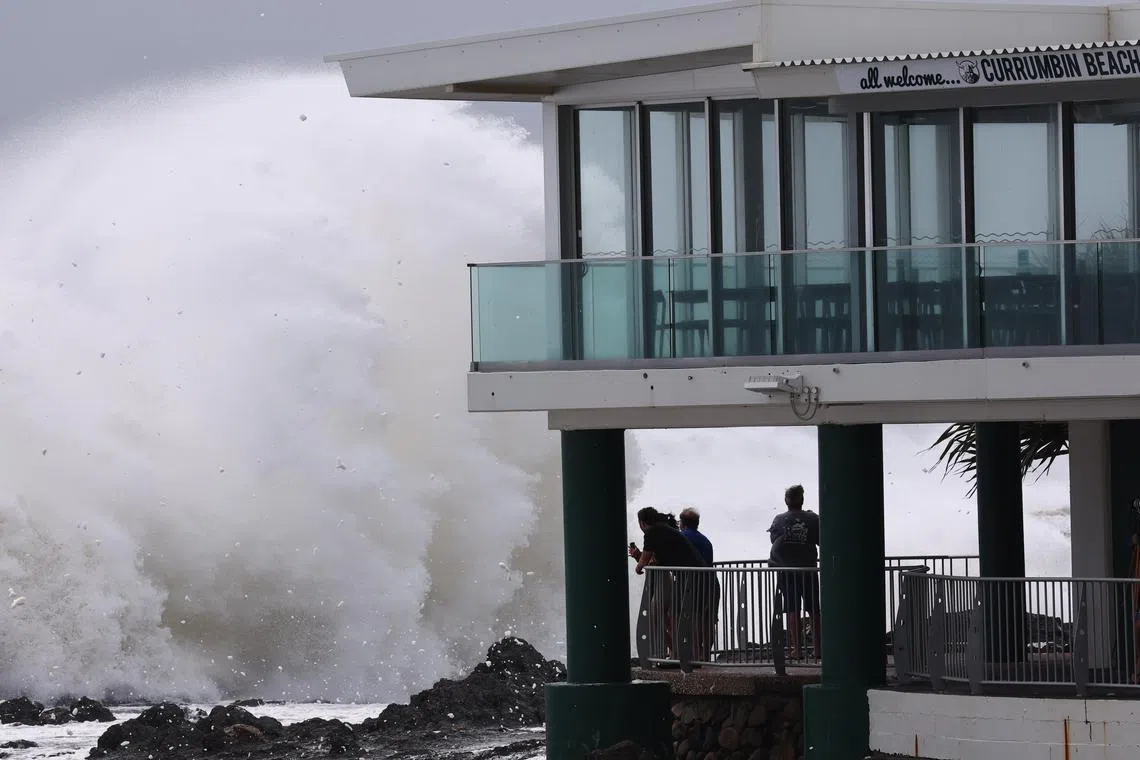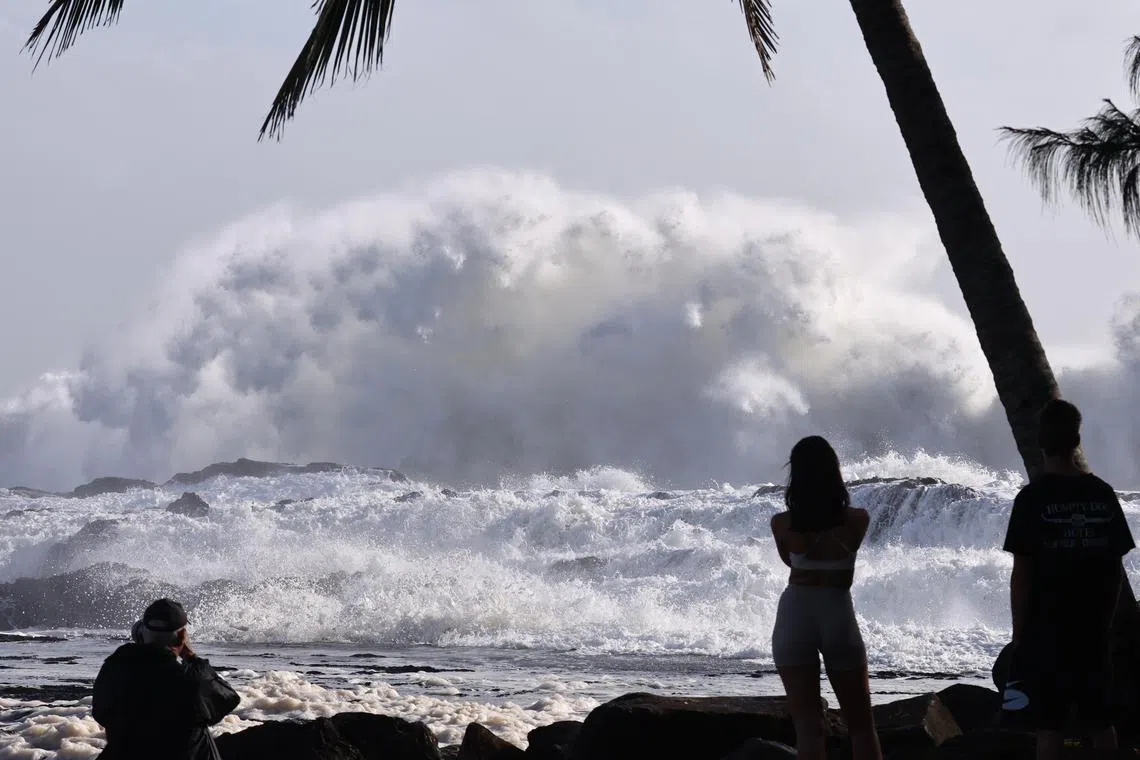Cyclone Alfred stalls off Australia’s east; transport, schools shut
Sign up now: Get ST's newsletters delivered to your inbox

Big waves seen at Curumbin Vikings Surf Club on the Gold Coast on March 6. The storm is now expected to make landfall by March 7 evening near Brisbane.
PHOTO: EPA-EFE
Follow topic:
SYDNEY – Cyclone Alfred stalled off Australia's east coast on March 6, delaying landfall as officials shut airports, schools and public transport, while residents stockpiled supplies and sandbagged homes against flooding expected when the Category 2 storm hits.
The storm is now expected to make landfall by the morning of March 8 near Brisbane, Australia’s third-most populous city, the Bureau of Meteorology said in its latest update, compared with a prior projection of a landfall by early March 7.
But the storm’s destructive reach will stretch across the border regions of the states of Queensland and New South Wales, bringing heavy rain, flooding and damaging winds.
“Alfred is behaving at the moment like a completely unwanted house guest. It’s told us it’s going to be late but linger even longer,” New South Wales Premier Chris Minns told reporters.
“Unfortunately that means the window for destruction in our community – heavy rains, winds, powerful surf – is longer than we would have otherwise liked.”
Storm warnings on March 6 stretched for more than 500km across the north-east coast, as huge waves whipped up by the cyclone eroded beaches, and officials urged residents in flood-prone areas to evacuate soon.
Prime Minister Anthony Albanese said the defence force would be ready to support emergency services.
Heavy rain from the weather system has already drenched some regions, said Mr Dean Narramore, a forecaster at Australia's weather bureau.
Mr Narramore said the stalling could result in “a longer and prolonged period of heavy rainfall, particularly in northern New South Wales”, leading to life-threatening flash flooding.

People looking at high waves from Cyclone Alfred at Snapper Rocks on the Gold Coast, Queensland, on March 6.
PHOTO: EPA-EFE
New South Wales resident Sara Robertson and her family have moved all their valuables from their home in the rural town of Murwillumbah to a motel ahead of the storm.
“I’m glad we’ve got a little bit more of a breather, feeling very tired today and we still have a lot to do,” Ms Robertson told ABC News after moving computers and electronics into the motel.
More than 5,000 properties in south-east Queensland and thousands in northern New South Wales are without power as officials warned there would be more outages when the wind speed increases.
Brisbane airport said it will suspend operations around 4pm on March 6 but keep its terminals open for defence operations.
Qantas Airways said its international operations from Brisbane would remain suspended until noon on March 8 and domestic flights until the morning of March 9.
More than 1,000 schools in south-east Queensland and 250 in northern New South Wales were closed on March 6, while public transport in Brisbane has been suspended.
Alfred has been called by officials a “very rare event” for Brisbane, Queensland’s state capital, with the city last hit by a cyclone more than half a century ago in 1974.
The city of around 2.7 million had near misses from cyclones in 1990 and in 2019. REUTERS

